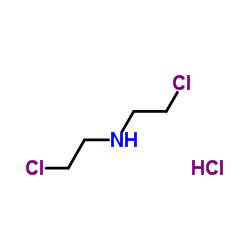Cytogenetic toxicity of cyclophosphamide and its metabolites in vitro.
W Au, O I Sokova, B Kopnin, F E Arrighi
Index: Cytogenet. Cell Genet. 26(2-4) , 108-16, (1980)
Full Text: HTML
Abstract
The effects of cyclophosphamide and three of its known metabolites (nitrogen mustard, acrolein, and nor-nitrogen mustard on chromosome breakage and sister chromatid exchange (SCE) were analyzed in vitro with and without the presence of a metabolic activating system (liver S9). We confirmed that cyclophosphamide induced chromosome breakage and SCE only in the presence of S9. After metabolism, cyclophosphamde was more active than the other agents in inducing SCE. Thus, the agent(s) directly responsible for this induction of a high SCE rate was not analyzed in this study. On the other hand, acrolein was most toxic to cell proliferation and most active in inducing chromosome breakage. The cytogenetic toxicity of these agents in comparison with their mutagenic and therapeutic activities is discussed.
Related Compounds
| Structure | Name/CAS No. | Molecular Formula | Articles |
|---|---|---|---|
 |
Bis(2-Chloroethyl)amine hydrochloride
CAS:821-48-7 |
C4H10Cl3N |
|
Occupational exposure to nor-nitrogen mustard: chemical and ...
1995-01-01 [Toxicol. Ind. Health 11(1) , 89-97, (1995)] |
|
Basic principles in preclinical cancer chemotherapy.
1990-01-01 [J. Cancer Res. Clin. Oncol. 116(5) , 411-24, (1990)] |
|
Covalent binding of nitrogen mustards to the cysteine-34 res...
2002-03-01 [Arch. Toxicol. 76(2) , 83-8, (2002)] |
|
The determination of cyclophosphamide and its metabolites in...
1994-03-01 [Biol. Mass Spectrom. 23(3) , 149-58, (1994)] |
|
Oxazolidonylethyl adducts to hemoglobin and DNA following no...
1996-01-05 [Chem. Biol. Interact. 99(1-3) , 263-75, (1996)] |